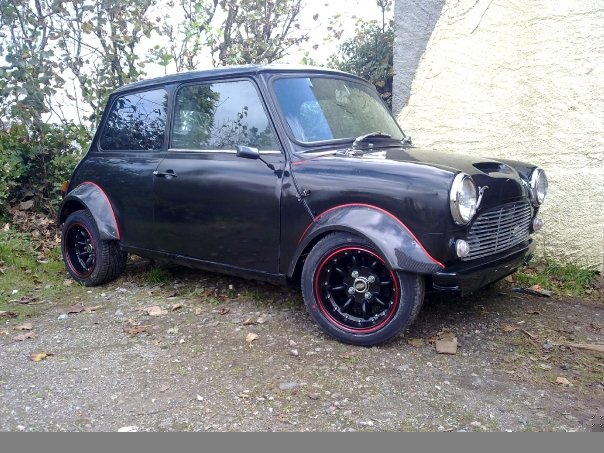Returning to your original post and question, both Dilligaf and I suggested that at least for now you should either join or cap the two carb ports rather than connect them to anything. I have not seen that configuration used on Minis but I have seen it used on MG Midgets. In those applications, the common tube coming off the Y did not go to the air filter housing, it went to the timing chain cover crankcase vent. So... the intake system was almost always drawing a vacuum in the crankcase and burning any oil fumes. I believe that when the PCV valve was added, these ports on the side of the carbs were eliminated (in most cases). The new plumbing route was for the timing cover (or tappet cover) crankcase vent to be connected to the Smiths PCV and the other side of the PCV went to the intake manifold.
If you are not going to fit a PCV valve to your engine, I would cap or join the two carb ports to eliminate them as a source of your immediate problem. You can always plumb them in later if you want. Keep in mind that some form of crankcase ventilation is required even if it is nothing more than a vent tube going to a catch can.

Looking For Source Of Air Leak.
Started by
minibarnerz
, Mar 03 2012 05:08 PM
17 replies to this topic
#16

Posted 05 March 2012 - 07:43 PM
#17

Posted 05 March 2012 - 09:31 PM
Yeah, will get a pipe n join the two carbs together without the "y" piece. :) it's ok to just connect the crankcase breather to just a filter such as http://www.halfords....tegoryId_165660
???
???
#18

Posted 05 March 2012 - 10:13 PM
Yes, I believe that breather would be fine. However, I think what most people prefer to do is fit as many of those as possible to the various "vents" on the engine.
The early A-series engines had only draft-tubes. Those came off an engine vent and ran down the back of the block and under the car. Oil fumes and drips simply puffed out and onto the ground. The vents like you will find on tappet chest covers and timing chain covers came later. Those vents were filled with metal mesh to catch and separate large oil droplets while the exiting vapors were routed to the intake manifold (like we were discussing earlier). Then came the Smiths PCV valve which selectively allowed the crankcase fumes to be routed into the intake manifold.
I do not claim to have the definitive answer on which crankcase ventilation system is best for any car. There are lots of options. For your current situation though, the vent filter you linked to will work but you may also want to add a vented oil filler cap to the valve cover if you don't already have one.
The early A-series engines had only draft-tubes. Those came off an engine vent and ran down the back of the block and under the car. Oil fumes and drips simply puffed out and onto the ground. The vents like you will find on tappet chest covers and timing chain covers came later. Those vents were filled with metal mesh to catch and separate large oil droplets while the exiting vapors were routed to the intake manifold (like we were discussing earlier). Then came the Smiths PCV valve which selectively allowed the crankcase fumes to be routed into the intake manifold.
I do not claim to have the definitive answer on which crankcase ventilation system is best for any car. There are lots of options. For your current situation though, the vent filter you linked to will work but you may also want to add a vented oil filler cap to the valve cover if you don't already have one.
1 user(s) are reading this topic
0 members, 1 guests, 0 anonymous users














